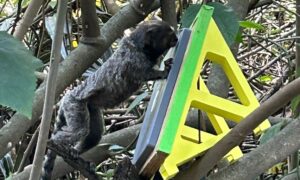Recently, an incident caught attention on the campus of the University of São Paulo (USP): two students transported a dead capybara on a campus bus and conducted a dissection of the animal near the Institute of Biosciences, without institutional authorization.
Although the action was driven by scientific curiosity, it sparks reflection on bioethics and biosafety in research involving wildlife. The handling of animals—whether alive or dead—requires strict biosafety protocols. The use of proper Personal Protective Equipment (PPE), such as gloves, masks, and safety goggles, is essential to avoid exposure to unknown pathogens.
Additionally, any environment where dissection or manipulation of animals takes place must be equipped for disinfection, ensuring there is no cross-contamination. Handling dead animals without knowledge of the cause of death also carries risks, such as the potential transmission of zoonotic diseases, which can be fatal to both humans and other animals.
For a long time, studying wildlife meant capturing, anesthetizing, and often stressing or even killing the animals. But the world has changed (and thankfully so!).
Today, the S.W.A.B. (Spontaneous Wildlife Autonomous Biosampler) shows that it’s possible to do science without invading the animal’s space.
The S.W.A.B. is a non-invasive, autonomous method for collecting saliva from wild animals—without the need for capture or direct contact.
In addition to reducing the risks of pathogen transmission to humans and causing no stress to the animal, the S.W.A.B. democratizes access to research: the design of the collector will be made available as open-source, allowing researchers and citizen scientists to build the equipment without the need for specialized training.
The capybara case serves as a reminder that the desire to understand nature should never outweigh respect for it. And the S.W.A.B. is proof that human curiosity can be an ally—not an enemy—of wildlife.
After all, it’s possible to do cutting-edge research without having to hitch a ride with a dead capybara on a bus…


